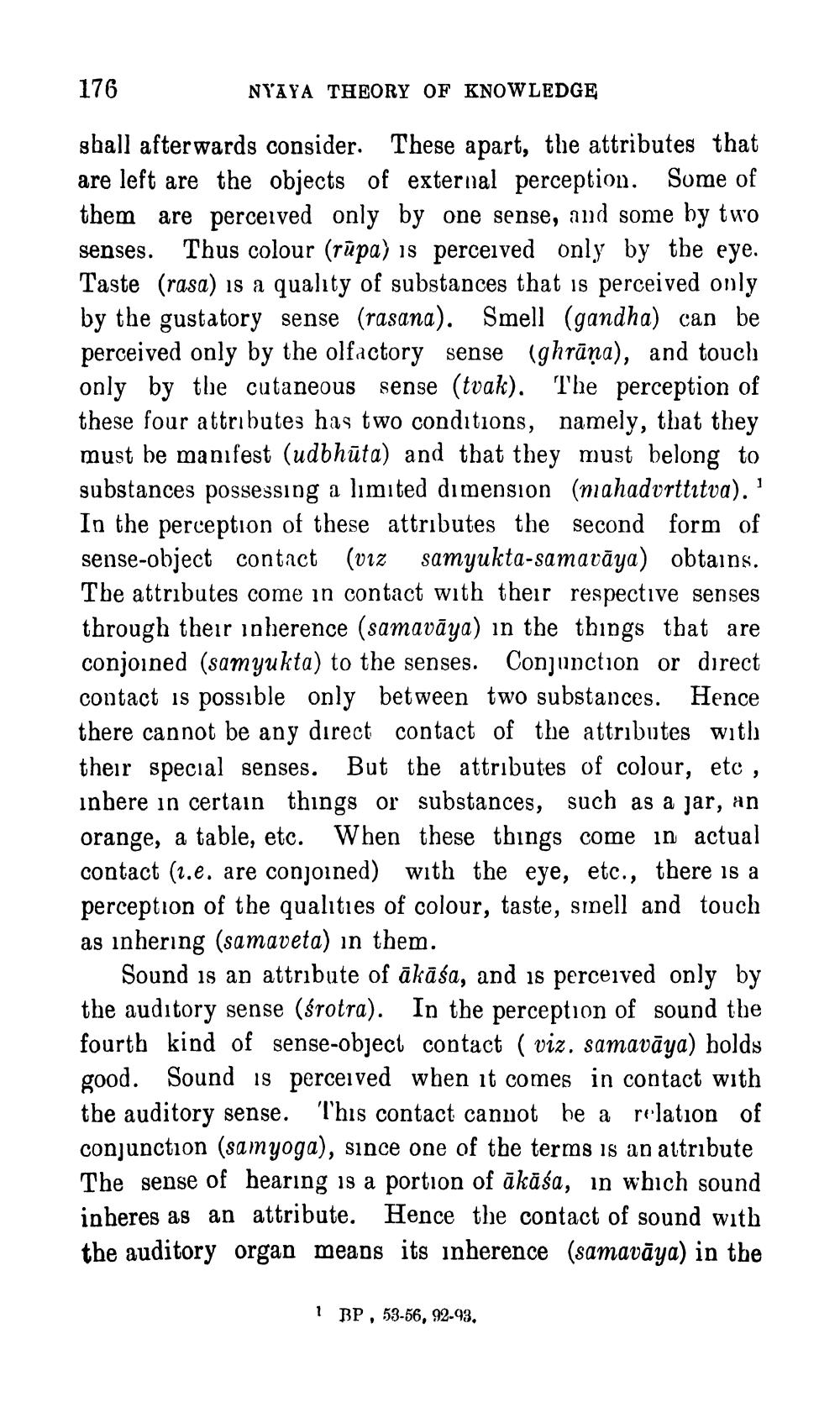________________
176
NYAYA THEORY OF KNOWLEDGE
shall afterwards consider. These apart, the attributes that are left are the objects of external perception. Some of them are perceived only by one sense, and some by two senses. Thus colour (rūpa) is perceived only by the eye. Taste (rasa) is a quality of substances that is perceived only by the gustatory sense (rasana). Smell (gandha) can be perceived only by the olfactory sense (ghrāņa), and touch only by the cutaneous sense (tvak). The perception of these four attributes has two conditions, namely, that they must be manifest (udbhūta) and that they must belong to substances possessing a limited dimension (mahadvrttıtva). ' In the perception of these attributes the second form of sense-object contact (viz samyukta-samavāya) obtains. Tbe attributes come in contact with their respective senses through their inherence (samavāya) in the things that are conjoined (samyukta) to the senses. Conjunction or direct contact is possible only between two substances. Hence there cannot be any direct contact of the attributes with their special senses. But the attributes of colour, etc, inbere in certain things or substances, such as a jar, an orange, a table, etc. When these things come in actual contact (2.e. are conjoined) with the eye, etc., there is a perception of the qualities of colour, taste, smell and touch as inhering (samaveta) in them.
Sound is an attribute of ākāśa, and is perceived only by the auditory sense (śrotra). In the perception of sound the fourth kind of sense-object contact (viz. samavāya) holds good. Sound is perceived when it comes in contact with the auditory sense. This contact cannot be a relation of conjunction (samyoga), since one of the terms is an attribute The sense of hearing is a portion of ākāśa, in which sound inheres as an attribute. Hence the contact of sound with the auditory organ means its inherence (samavāya) in the
1 BP, 53-56, 92-93.




